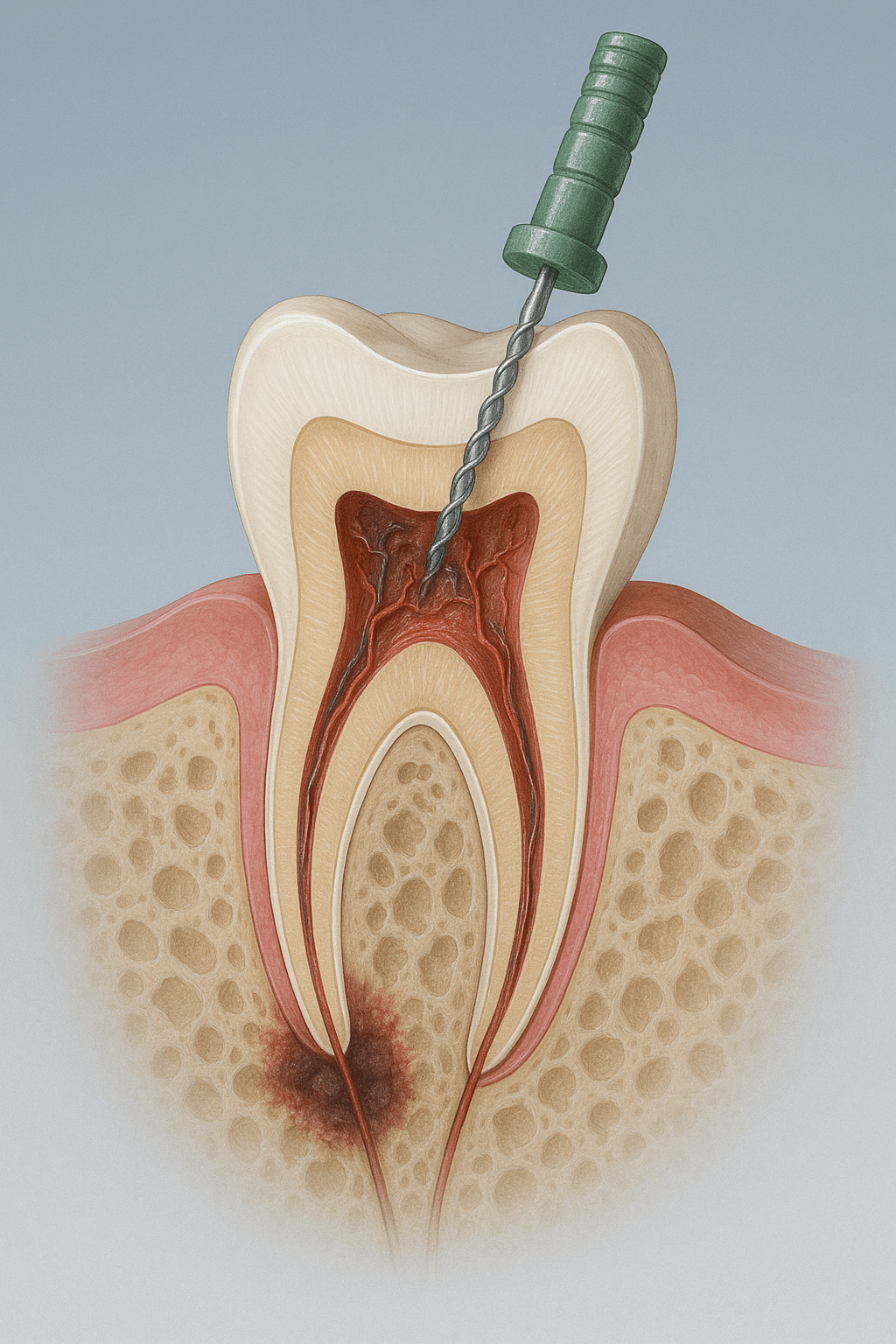Root Canal Treatment
Save your natural teeth with advanced root canal therapy using laser and microscopic technology
Advanced Technology
State-of-the-art equipment
Expert Team
Specialized endodontists
Painless Treatment
Comfortable procedure
High Success Rate
Long-lasting results
What is Root Canal Treatment?
Root canal treatment (endodontic treatment) is a dental procedure that treats infection at the center of a tooth. The treatment involves removing the damaged area of the tooth (the pulp), cleaning and disinfecting it, then filling and sealing it.
The procedure is necessary when the pulp, which contains nerves and blood vessels, becomes infected due to deep decay, repeated dental procedures, cracks, or trauma. If left untreated, the infection can cause severe pain, abscess, and eventually tooth loss.

When Is Root Canal Treatment Needed?
Common Signs & Symptoms
- Severe toothache
Pain when chewing or applying pressure
- Prolonged sensitivity
Lingering pain to hot or cold temperatures
- Discoloration of the tooth
Darkening or graying of the affected tooth
- Swelling and tenderness
In the nearby gums or face
Causes of Pulp Damage
- Deep decay
Untreated cavities that reach the pulp
- Repeated dental procedures
Multiple treatments on the same tooth
- Cracked or chipped teeth
Damage that exposes the pulp
- Trauma to the face
Injury that damages the tooth
The Root Canal Process
Examination
Thorough examination including X-rays to assess the extent of damage and plan the treatment.
Anesthesia & Access
Local anesthesia is administered for your comfort, and a small access opening is created in the tooth.
Cleaning & Shaping
Removal of infected pulp and thorough cleaning of the root canals using specialized instruments.
Filling & Sealing
The cleaned canals are filled with a biocompatible material called gutta-percha and sealed to prevent reinfection.
Restoration
Placement of a crown or other restoration to protect the tooth and restore its function.
Our Advanced Technology
Dental Microscopes
Our Prima Mμ microscopes provide enhanced visibility for precise treatment of even the most complex root canal systems.
Laser Technology
Advanced laser systems for superior disinfection and more effective treatment with less discomfort.
Digital Imaging
High-resolution digital X-rays and 3D imaging for accurate diagnosis and treatment planning.
Root Canal Myths vs. Facts
Root canal treatment gives you the opportunity to keep and save your own tooth. However, for many people, when they hear the word, they immediately mistakenly think of a painful and straining treatment. Let's debunk these common misconceptions.
Myth
"Root canal treatment is extremely painful."
Fact
Thanks to local anesthesia, the treatment is painless. Modern techniques make root canal treatment no more uncomfortable than getting a filling. In fact, it relieves the pain of an infected tooth.
Myth
"It's better to extract the tooth than have a root canal."
Fact
Saving your natural tooth is always the best option when possible. Root canal treatment has a high success rate and can preserve your tooth for a lifetime.
Myth
"One treatment is enough."
Fact
Root canal treatment typically consists of 2-3 sessions on average. The pain disappears after the first treatment, but completing all sessions is essential for permanent tooth preservation.
Aftercare & Long-term Success
Post-Treatment Care
A painless root-treated tooth can last a lifetime with proper oral care and regular dental check-ups. It is worth noting that, despite this, the tooth can become discolored or easily brittle over time due to the lack of pulp.
At our dental clinic, with the help of modern CAD/CAM technology, we can create an inlay/onlay or crown replacement for the remaining tooth root, which can easily remedy these problems.
Potential Considerations
Professional whitening available if needed
Crowns or inlays for weakened teeth
Monitoring for long-term success
Need Root Canal Treatment?
Contact us today to schedule your consultation and save your natural tooth